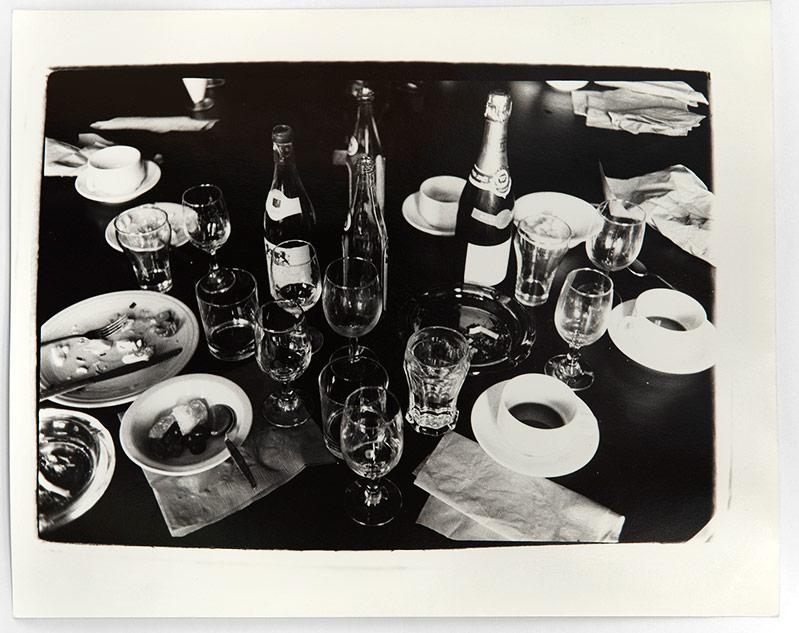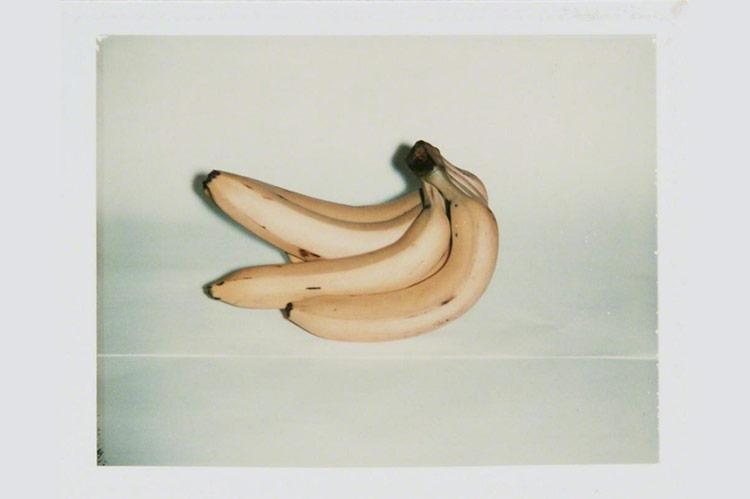After a retrospective that spanned three floors at the Whitney Museum of American Art last year, the idea that there is an unexplored wrinkle in the career of Andy Warhol seems unlikely on its surface.
In actuality, that exhibition, which gave as much weight to his later and earlier years as it did to his career zenith with Pop Art, was a well-edited survey that left out a good deal of artistic production from an artist who called his studio the Factory and treated its output as such by intention and design.
One of the pivotal moments documented in that show was the artist’s rejection of hand-painted works in favor of a mechanical process and how he strove to find the perfect medium to make that shift. Silkscreen became that medium, but he further relied on the mechanical processes of photography and commercial printing to provide the images that would become so iconic.
From the early ephemera displayed in that show, it was clear that photography was an essential part of his process — the source for sketches that became drawings and illustrations he used as a commercial artist and privately. For his silkscreens, he often chose newspaper and magazine publicity photos of people like Marilyn Monroe, Elvis, Jacqueline Kennedy Onassis, and Chairman Mao, in addition to objects and disaster scenes.
But over the years he also took his own photographs, and Jack Shainman Gallery in West Chelsea is presenting three decades of the artist’s engagement with pictures, both static and moving, with his own cameras and in photo booths. The exhibition is grouped between the gallery’s two locations according to subjects or mediums. It was organized with Jim Hedges, who served as a co-curator with the gallery.
Given the amount of material, existing threads don’t always become apparent moving from room to room or site to site. In addition to the early photo booth images of Holly Solomon and Bobby Short, among others from the 1960s, the ex hibition also includes Polaroid images from the cameras Warhol began carrying everywhere in the late 1960s and continued to carry even as he began making black-and-white gelatin prints from a 35-millimeter Minox camera given to him by his Swiss dealer, Thomas Ammann.

The 35-millimeter camera was the medium he preferred for pictures of Montauk, where he had a house for many years. At 20th Street, four of the same images of a Montauk beach are stitched together to form a panel, much like other subjects such as animals, landscapes, and nude studies he treated the same way late in his career. Another view of a beach and a seaplane pulled up to a dock can be presumed to have been taken there or nearby. At 24th Street, there are images of Jon Gould captured in Montauk, Warhol’s house there, and the model Pat Cleveland posed with her back arching over a large rock in the water. All of these date from 1981 or 1982.
Much as he elevated consumer culture and packaging in his early years, his camera lens often settled on the banal, capturing objects such as chairs, a telephone, a lamp, eggs, knives, and bananas, or his recurring attention to shoes, something that had appealed to the artist from his early years in both his personal and commercial art.
But the most copious photographic subject, at least in these selections, is the male form clothed or mostly undressed, and sometimes interrupted by a nude torso of a female such as Pat Hearn or Alba Clemente. A significant portion of the exhibition is devoted to a 1977 series of Polaroid “Torsos,” focused on the area below the abdomen, at least on the males, in frontal and rear views. The “Sex Parts” series from the same period is a group of photos taken of males engaging in fellatio. Both series became the basis for screen prints and paintings.
According to notes from a 2010 exhibition at the Andy Warhol Museum, the photographs were inspired by classical nudes and fertility themes tracing back as early as the “Venus of Willendorf,” from about 30,000 B.C., but may have also been his final acceptance and affirmation of his sexuality after years of Catholic guilt. That exhibition was the first time many of those images were seen, and here the photos on which they were based also seem fresh and unexpected.
Warhol also used Polaroids for informal portraits of friends and acquaintances such as Diane and Egon von Furstenberg, Tina Chow, Gianni Agnelli, Debbie Harry, Kareem Abdul-Jabbar, Lee Radziwill, Grace Jones, Rudolf Nureyev, and so on. A chronicle of a very specific time in New York City, the variety of personalities demonstrates the fluidity of his social life.
The exhibition underlines certain themes and personalities as context or a fresh view of the artist. Jean-Michel Basquiat, a friend and collaborator of Warhol’s in the 1980s, appears multiple times in Polaroids and gelatin silver prints, at the airport, and in a nude portrait. Warhol’s own self-portrait Polaroids are typically headshots and often feature wigs or “fright wigs,” which gave the artist a signature look. The last one was taken in 1986, a year before his death.
The photographs strip away much of the camouflage and distancing of the silkscreen medium and more clearly demonstrate the artist’s choices and intentions, which were often apparent just below the surface. The exhibition is on view through Feb. 15




